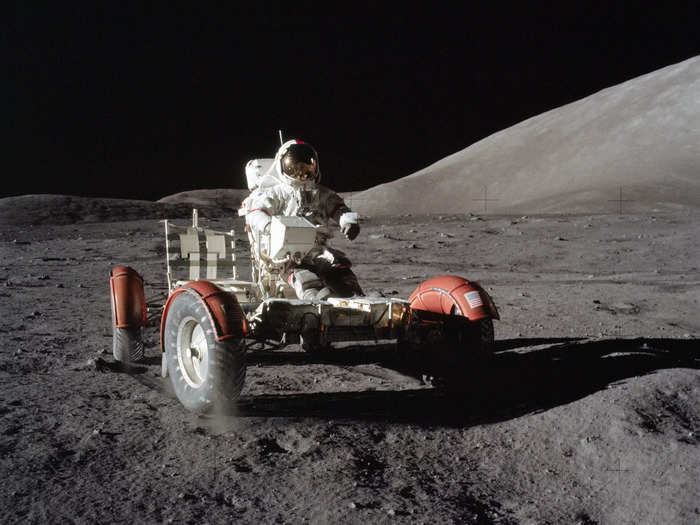
Left: A test of an Orion spaceship prototype in 2019. Right: Technicians assemble the Space Launch System rocket in 2021.NASA/Tony Gray and Kevin O’Connell/Cory Huston/Insider annotations
Looming over a launchpad at NASA's Kennedy Space Center in Florida, the first big moon rocket since the Apollo missions is fully stacked and ready to blast off on its maiden voyage.
The mission, called Artemis I, aims to send an Orion spaceship around the moon and back. It's the first of three flights meant to culminate in landing humans on the surface of the moon for the first time since 1972. Eventually, NASA plans to use the new rocket, called the Space Launch System (SLS), to set up a permanent base on the moon.
"This is now the Artemis generation," Bill Nelson, NASA's administrator, said at a press briefing on August 3. "We were in the Apollo generation, but this is a new generation, this is a new type of astronaut. And to all of us that gaze up at the moon, dreaming of the day humankind returns to the lunar surface, folks, we're here. We are going back and that journey, our journey, begins with Artemis I."
NASA's ambitious 21st century lunar campaign requires powerful and advanced space hardware in the SLS mega-rocket, including its boosters and core stage, and the high-tech crew vehicle called Orion. Here's how NASA built these powerful pieces of equipment.






























 A centenarian who starts her day with gentle exercise and loves walks shares 5 longevity tips, including staying single
A centenarian who starts her day with gentle exercise and loves walks shares 5 longevity tips, including staying single  A couple accidentally shipped their cat in an Amazon return package. It arrived safely 6 days later, hundreds of miles away.
A couple accidentally shipped their cat in an Amazon return package. It arrived safely 6 days later, hundreds of miles away. Colon cancer rates are rising in young people. If you have two symptoms you should get a colonoscopy, a GI oncologist says.
Colon cancer rates are rising in young people. If you have two symptoms you should get a colonoscopy, a GI oncologist says. Having an regional accent can be bad for your interviews, especially an Indian one: study
Having an regional accent can be bad for your interviews, especially an Indian one: study
 Dirty laundry? Major clothing companies like Zara and H&M under scrutiny for allegedly fuelling deforestation in Brazil
Dirty laundry? Major clothing companies like Zara and H&M under scrutiny for allegedly fuelling deforestation in Brazil
 5 Best places to visit near Darjeeling
5 Best places to visit near Darjeeling

Copyright © 2024. Times Internet Limited. All rights reserved.For reprint rights. Times Syndication Service.